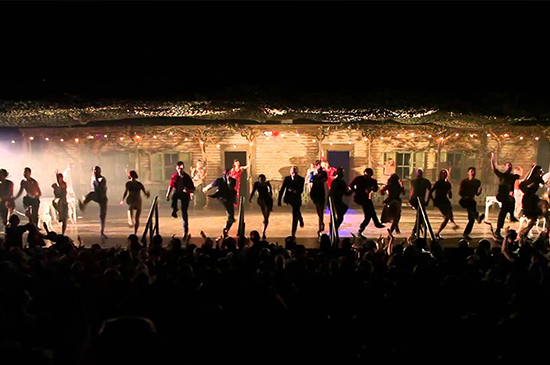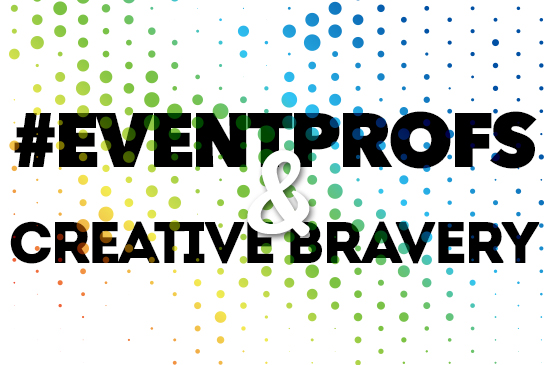To Restrict Ideas is to Restrict Innovation
In our industry, having an inspired and motivated creative team to create these ideas is just as important as a strong sales team to sell them, yet we continue to make budget cuts to the less quantifiable of the two when the budget is tight.
Why do we compromise the power to generate ideas over the power to generate revenue, when they are co-dependant factors of success?
We all know that content is king, but a king cannot stand alone.
The translation of that content into an experience is what engages consumers, seals deals and changes lives – The experience is the marketing.
If we limit our capability to deliver products in engaging ways, aren’t we ultimately limiting our potential for growth, if not stunting it completely?
If it’s brilliant ideas that change the world, then we can’t afford not to invest in them.
A Case Study in the Rewards of Creative Bravery
Every day we see new examples of organisations understanding this, putting it into practice and producing ground-breaking new experiences. The likes of Block 9’s work on Dismaland, Secret Cinema’s annual events and Punchdrunk’s immersive theatre – these are experiences which have taken creative bravery to new heights.

These events are never formulated with the singular goal of turning a profit. Although of course the aim is to sell tickets, instead, they take the time, effort and funding to source the perfect creative team to ensure they pull off events so extraordinarily impressive, word of mouth is all the PR they’d ever need to sell tickets. Instead of focusing on the ‘how’, they prioritise the ‘why’ – making the experience as powerful as possible for the people.
This means a compromise on artistry is never an option, and as result, they achieve not only critical acclaim but an inspired, adoring and loyal fanbase too.
In the case of Punchdrunk’s 2013 immersive theatre experience, ‘The Drowned Man’, within the first week of opening, a forum was created to discuss the show, which quickly escalated into a fully established online subculture complete with social hierarchy – your stature of which defined by how many times you’d been.
Over 4000 members actively posted conspiracy theories and swapped stories, giving themselves the group identity as ‘Spoilers’ who would arrange meetups weekly to discuss their latest thoughts and experiences of the show.
Over The Drowned Man’s mere 6-month stint in an abandoned warehouse in Paddington, top members boasted their 25th, 30th, 40th trips to Temple Studios, coughing up £30 for a ticket each time. So what was it that made The Drowned Man so seductive that people would return such an extraordinary amount of times? Aside from the investment in creativity which had produced an astonishing multi-sensory experience, the USP was the genius prospect of a ‘One-on-one.’
At varying points during every 3-hour performance, an actor among the 15-strong cast would seem to break character and face the audience. They’d approach an audience member at random, take them by the hand, and suddenly run away with them, often disappearing behind a swiftly-locked door. Some fifteen minutes later, the person would then be released again, armed with a completely unique experience they’d had above everyone else.
This was known as a ‘One-on-one’.
And this was golddust.

Getting a one-on-one was a matter of luck and timing, but the tantalising prospect of being the ‘chosen one’ was enough to send this online forum into a frenzy – seeing members forking out thousands and thousands over that six months, in the hopes that they’d have the experience of being picked, so they could return home in a blaze of glory, hushing the restless crowd as they begin to regale their story.
Storytelling is the Lifeblood of the Creative Industry
See, what Punchdrunk was providing was not only a production so powerful it procured a cult following who wanted to see it, but it also offered the irresistible lure of a chance to become part of their story and leave with your own story – social currency.
They empowered their audiences to become storytellers too.
What resulted was little less than a cultural phenomenon, which never could have come to fruition without a devoted and diverse creative team willing to take risks and defy convention to try and create the extraordinary.
In Conclusion
In this rapidly-evolving industry we’re always looking for ways to create the ‘Next Big Thing’, and that means opening our doors to braver, more creative and more dynamic ideas.
And the only way we can produce a more diverse range of ideas that will pave the way for the brilliant, is to have a diversity of idea-makers.
After all, it is brilliant ideas that are changing the world, so we really can’t afford not to listen.
So by re-evaluating the creative diversity of our organisations, one by one, we can begin to change the face of the industry, and before long those small changes will become a movement. A movement that embraces the power and potential of greater creative bravery, so that we too, can make all of our clients, consumers and audiences feel like they are the chosen ones.





